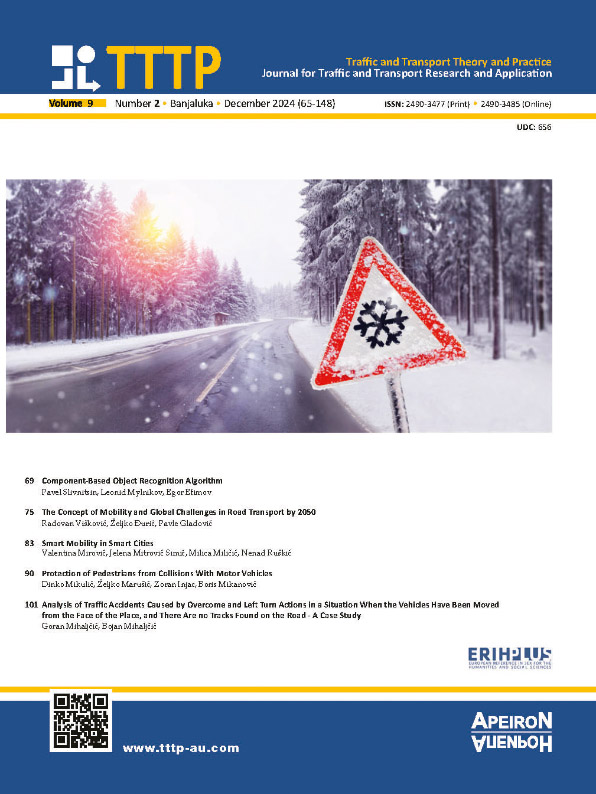The Concept of Mobility and Global Challenges in Road Transport by 2050
DOI:
https://doi.org/10.7251/JTTTP2402075VKeywords:
drivers mobility, EU Directives, IRU, road operators, CPCAbstract
After collecting and processing of the facts, it is evident that today, 2.6 million posts of drivers remain unfilled in the countries covered by the survey with a tendency that this estimated number shall increase to 3 million. In data processing, the official data of the International Road Transportation Union IRU
have been used which are explicitly showing that a trend of «vacant» jobs and mobility challenges have been observed in all regions, except Eurasia. The least affected countries are Mexico and Argentina with 8.6% of truck driver vacancies, the exception being China, where the system is stable. In the paper, we deal with the issue of mobility in countries outside the EU, especially the countries of the Western Balkans where we have determined that the trend of drivers leaving for the EU is on the rise and will be especially instigated by continuous economic recovery of global GDP growth, persistent tensions in the supply and demand of road freight and decrease in available workforce of drivers as well as training and qualification challenges. To obtain the results of the work, we set the first hypothesis «lack of professional drivers is a global problem that directly affects the GDP», as well as the second hypothesis «EU directives and the lack of standards harmonisation in the countries outside the EU cause job positions of motor vehicle drivers being uncovered» In order to understand the set hypotheses, our work included extensive research and experience, whereas the methods used include: inductive and deductive methods, methods of analysis and synthesis, methods of abstraction and concretization, methods of generalization and specialization, method of classification, method of description, method of compilation and comparative method. With the protocols, road transport operators have committed to become carbon neutral by 2050 through the IRU Green Compact
, the summary provides an overview of this research, focusing on the scenarios assessed and the recommended way forward. In short, which optimization model is the best for road transport operators to make Europe carbon neutral by 2050 on one hand and on the other, to meet the standards of the EU Directives on the mobility of workers, professional competences, skills and abilities, so to make the profession of a professional driver attractive for young people, and also to facilitate and remove the existing barriers that are visible. In conclusion, we confirmed and proved the set hypotheses with proposal for the measures at different levels and recommendations to eliminate or stop negative trends through comprehensive coordination.
